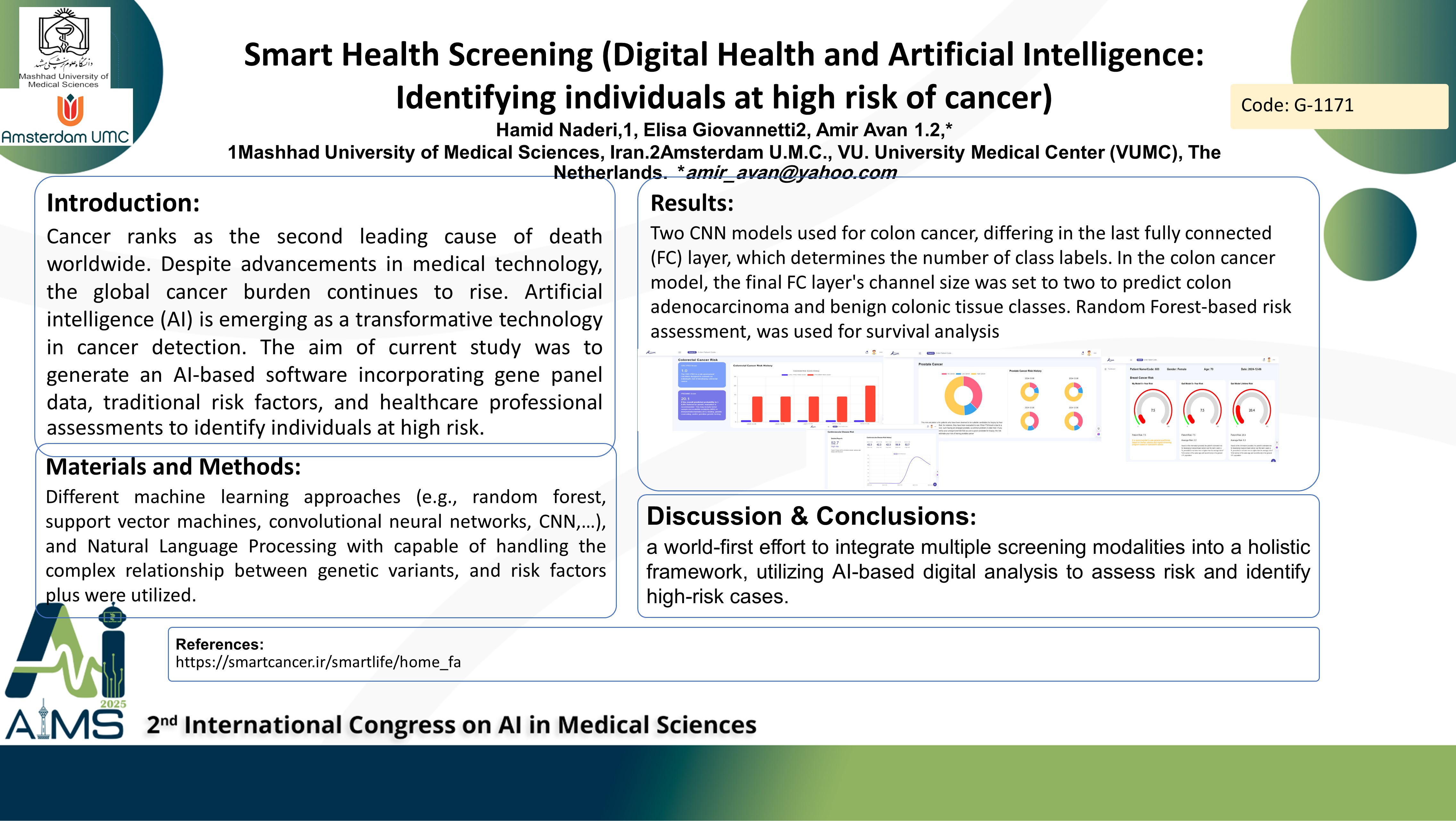هوش مصنوعی در سرطان
کد: G-1171
نویسندگان: Hamid Naderi ℗, Elisa Giovannetti, Amir Avan *
زمان بندی: زمان بندی نشده!
برچسب: تشخیص و درمان سرطان
دانلود: دانلود پوستر
خلاصه مقاله:
خلاصه مقاله
Background and aims: Cancer ranks as the second leading cause of death worldwide, claiming approximately 9.6 million lives annually—about one in every six deaths, according to the WHO. Despite advancements in medical technology, the global cancer burden continues to rise, with tumor types like colorectal, pancreatic cancers, dominating incidence and mortality statistics. Despite advances in medical technology and screening programs, gaps in the detection in the normal population persist, leading to delayed diagnosis. Artificial intelligence (AI) is emerging as a transformative technology in cancer detection. The aim of current study was to generate an AI-based software incorporating gene panel data, traditional risk factors, and healthcare professional assessments to accurately predict and identify individuals at high risk. Method: Different machine learning approaches (e.g., random forest, support vector machines, convolutional neural networks, CNN,…), deep learning algorithms, and Natural Language Processing with capable of handling the complex relationship between genetic variants, and risk factors plus were utilized. The system is being used Python programming in Django – MySQL – ChartJS - jscharting framework plus HTML, CSS, JavaScript tools. Software development was as followed: independent module development for front-end and back-end Version control using Git. Then the platform evaluated in 2500 cases in 39 units in multi center setting. Results: Two CNN models used for colon cancer, differing in the last fully connected (FC) layer, which determines the number of class labels in the dataset. In the colon cancer model, the final FC layer's channel size was set to two to predict colon adenocarcinoma and benign colonic tissue classes (https://smartcancer.ir/). Random Forest-based risk assessment, was used for survival analysis for short-term (5-year risk) and long-term (lifetime risk) risk modeling. The platform integrates Electronic Health Records (EHR) with blockchain technology to enhance security, privacy, and data integrity plus generation and drawing the patient's family tree, which can help in genetic counselling. Conclusion: This study represents a world-first effort to integrate multiple screening modalities into a holistic framework, utilizing AI-based digital analysis to assess risk and identify high-risk cases.
کلمات کلیدی
Cancer, Early Detection, High Risk, AI
